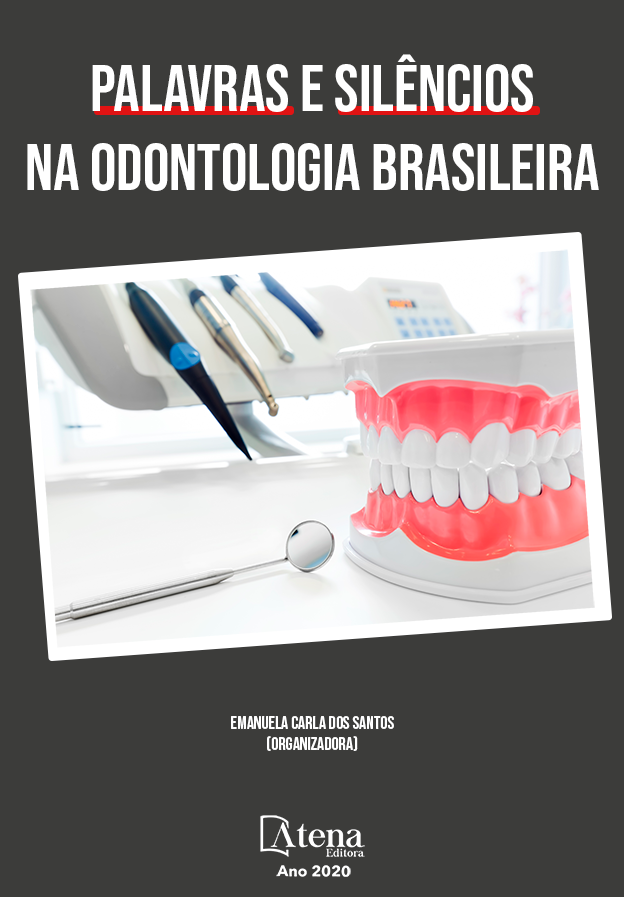
ODONTECTOMIA PARCIAL INTENCIONAL EM TERCEIROS MOLARES INFERIORES: INDICAÇÕES E TÉCNICA - INTENTIONAL PARTIAL DENTISTRY IN LOWER MOLAR THIRD PARTIES: INDICATIONS AND TECHNIQUE
Introdução: a cirurgia de dentes inclusos é uma rotina na especialidade da cirurgia bucomaxilofacial. Estes dentes, com grande frequência, estão associados a diversas alterações patológicas, dentre elas, cistos, tumores, cárie, doença periodontal e processos infecciosos que justificam a sua remoção, sendo os terceiros molares inferiores os que ocorrem com mais frequência. Objetivo: demonstrar as indicações e descrever a técnica da odontectomia parcial intencional através de uma revisão de literatura. Metodologia: para a elaboração deste trabalho foi realizada um levantamento bibliográfico, utilizando-se a base de dados, BVS, utilizando as palavras chaves: cirurgia bucal, odontectomia, e nervo mandibular. Discussão: dependendo da posição em que os terceiros molares se encontram, sua remoção pode ser bastante traumática e acarretar complicações, como lesão ao nervo alveolar inferior, dor intensa ou infecção pós-operatória. Para minimizar esse problema, foi desenvolvida a odontectomia parcial intencional, que consiste na remoção da coroa do elemento dentário, sepultando intencionalmente suas raízes no osso alveolar com o objetivo de minimizar possíveis distúrbios neurossensoriais ao nervo alveolar inferior que ocorreriam durante a extração de um dente retido em íntimo contato com o canal mandibular. Considerações finais: A odontectomia parcial intencional é uma técnica alternativa viável que pode ser empregada, quando bem indicada, com o intuito de prevenção de traumatismos ao nervo alveolar inferior nas exodontias de terceiros molares inferiores inclusos.
ODONTECTOMIA PARCIAL INTENCIONAL EM TERCEIROS MOLARES INFERIORES: INDICAÇÕES E TÉCNICA - INTENTIONAL PARTIAL DENTISTRY IN LOWER MOLAR THIRD PARTIES: INDICATIONS AND TECHNIQUE
-
DOI: 10.22533/at.ed.8042011093
-
Palavras-chave: Cirurgia bucal, odontectomia, e nervo mandibular.
-
Keywords: Oral surgery, odontectomy and mandibular nerve
-
Abstract:
Introduction: surgery of included teeth is a specialty routine of maxillofacial surgery. These teeth, with great frequency, are associated with several pathological alterations, among them, cysts, tumors, caries, periodontal disease and infectious processes that justify their removal, being the third lower sauces that occur more frequently. Objective: to demonstrate how to indicate and describe an intentional partial odontectomy technique through a literature review. Methodology: to elaborate this work, a bibliographic survey was carried out, using databases, VHL, using as keywords: Oral surgery, odontectomy and mandibular nerve. Discussion: depending on the position in which the third molars can be affected, their removal can be quite traumatic and complicated, such as injuries to the lower alveolar nerve, severe pain or postoperative infection. To minimize this problem, an intentional partial odontectomy was developed, which consists of removing the crown from the dental element, intentionally burying its roots in the alveolar bone in order to alter the sensorineural changes in the lower alveolar nerves of the lower alveolar nerve, during the extraction of a tooth retained in close contact with the mandibular canal. Final considerations: Intentional partial dentistry is a viable alternative technique that can be used, when well indicated, in order to prevent trauma to the lower alveolar nerve in extractions of the included lower third molars.
-
Número de páginas: 10
- PAULO GILSON ARAÚJO GOMES
- Maria Márcia Marques da Silva Aragão
- Carlos Eduardo Nogueira Nunes
- Antônio Romilson Pires Rodrigues
- Antonio Igor Alcântara Melo
- Alexandre Pontes de Mesquita
- Francisco Belchior Rodrigues Vasconcelos
- Antonio Edson Farias de Almeida
- Mirrael de Sousa Lopes
- Lara Gomes de Alcântara
- Timóteo Sousa Lopes
- André Pereira de Lima


